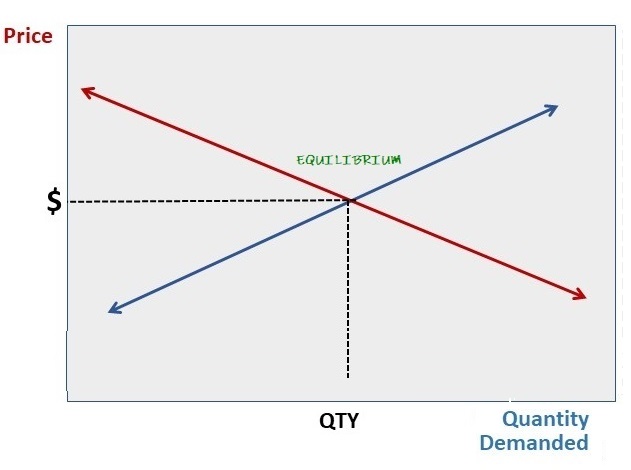
Adam Smith’s Law of Supply and Demand, also known as the law of markets, is a fundamental principle in economics that describes the relationship between the supply of a product or service and the demand for that product or service. According to this law, the price of a product or service in a free market will be determined by the balance between its supply and demand.
In everyday life in America, the law of supply and demand affects various aspects of the economy and consumer behavior. Here are a few examples:
- Pricing of goods and services: The law of supply and demand plays a crucial role in determining the prices of goods and services. When the demand for a product or service is high relative to its supply, the price tends to increase. Conversely, if the supply exceeds the demand, prices may decrease. For instance, during periods of high demand, such as the holiday season, the prices of popular consumer goods like electronics or toys tend to rise due to increased competition and limited supply.
- Wages and employment: The law of supply and demand also influences the labor market. If the demand for a particular type of labor exceeds the available supply, wages for workers with those skills are likely to rise. On the other hand, if the supply of a specific type of labor surpasses the demand, wages may decrease. For instance, in sectors facing a shortage of skilled workers, such as technology or healthcare, employees with in-demand skills can command higher wages.
- Housing market: The law of supply and demand significantly impacts the housing market in the United States. When demand for housing in a particular area exceeds the available supply of homes, prices tend to rise. In regions with strong job markets and population growth, the demand for housing can outpace the construction of new homes, leading to increased home prices and potentially creating affordability challenges for buyers. Conversely, when the supply of homes exceeds demand, prices may decline, making it more favorable for potential buyers.
- Financial markets: The law of supply and demand influences financial markets, including stocks, bonds, and commodities. When the demand for a particular stock or asset exceeds its supply, its price tends to rise. Conversely, if the supply exceeds demand, prices may decrease. Investors closely monitor supply and demand dynamics to make investment decisions, anticipating price movements based on market conditions.
Overall, Adam Smith’s Law of Supply and Demand is a cornerstone of modern economics and has a significant impact on everyday life in America. It affects pricing, wages, employment, housing, and financial markets, shaping the economic decisions and behaviors of individuals, businesses, and policymakers.
